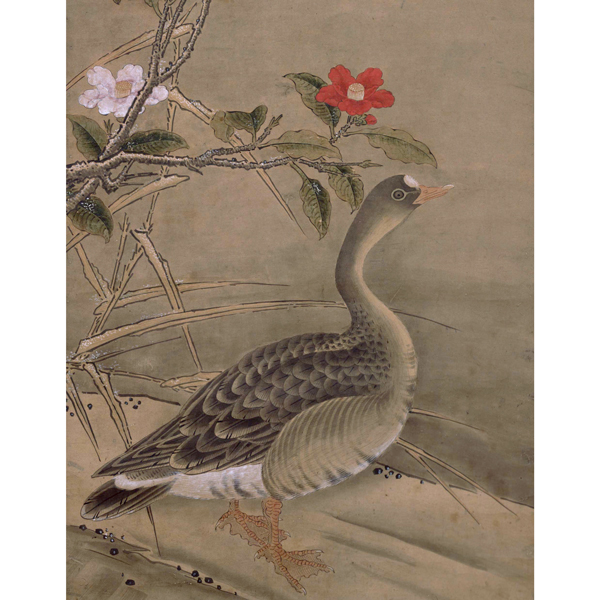Zen and Ink Painting | 13th–16th century
-

The Bodhisattva Monju with Birds and Flowers (detail)
By Tōzen, Muromachi period, 16th centuryJapanese Gallery (Honkan) Room 3
May 27, 2025 (Tue) - July 6, 2025 (Sun)Zen Buddhism was introduced from China, and had widespread influence on culture in Japan. Zen does not stress elaborate rituals or the study of sacred texts. Rather, it teaches that meditation and daily tasks, even cooking and cleaning, are the way to spiritual enlightenment. In the 13th century, monks brought Zen to Japan as a complete school of Buddhist thought.
These monks also brought the latest cultural practices from China. One of them was ink painting, which uses expressive lines and delicate gradations to portray nature and people. Ink painting spread beyond Zen temples and became a major artistic tradition in Japan.
Another practice was calligraphy by Zen masters, which was prized for its spiritual and aesthetic value. Along with the painting and calligraphy shown here, Zen Buddhism influenced tea ceremony, garden design, and many other forms of art.
| Designation | Name | Creation/ Excavation/ Provenance |
Period | Acquisition/ Ownership/ Accession Number |
CMT | ||
| Highlight | The Buddha with Wagtails and a Night Heron | Attributed to Kanō Motonobu | Muromachi period, 16th century | A-170 | |||
| Highlight | Poem by Du Fu | By Musō Soseki (1275–1351) | Kamakura period, 1318 | Donated by a private individual, B-3474 | |||
| Important Art Object | Buddhist Verse for Hozenshi | By Guchū Shūkyū (1323–1409) | Nanbokuchō period, 14th century | Lent by the Tokiwayama Bunko Foundation, Tokyo | |||
| The Bodhisattva Monju with Birds and Flowers | By Tōzen | Muromachi period, 16th century | A-1393 | ||||
| The Immortals Zhang Guolao, Tieguai, and Lu Dongbin | By Keison | Muromachi period, 16th century | Lent by the Tokiwayama Bunko Foundation, Tokyo |
